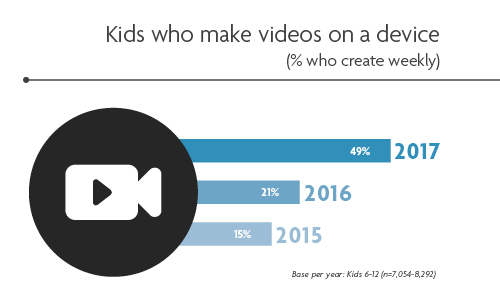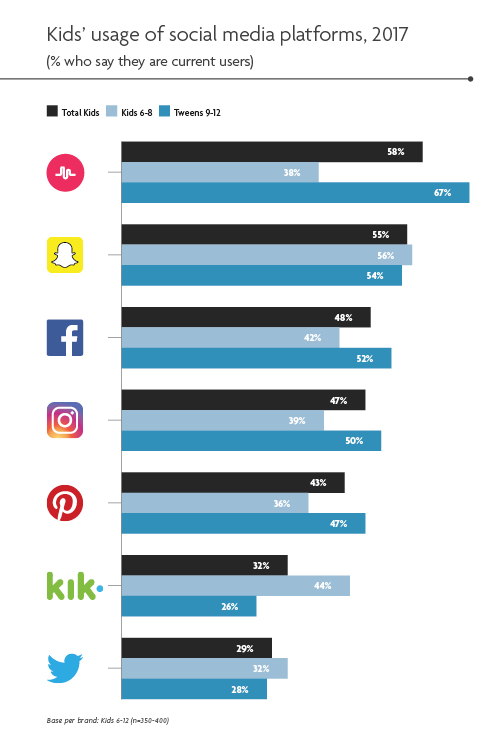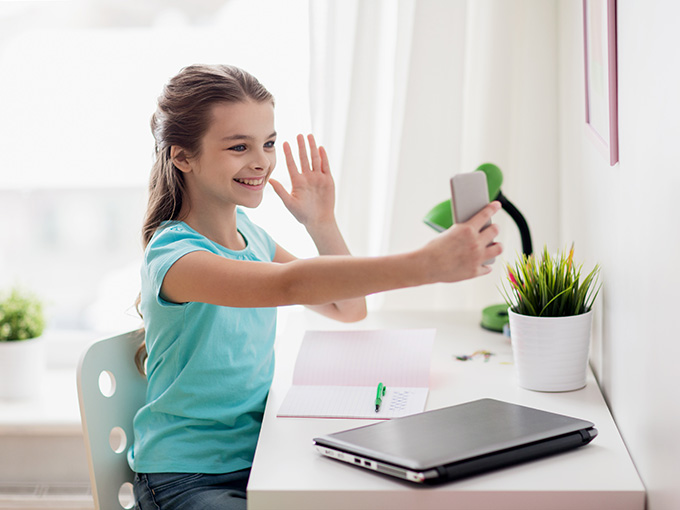By Stephanie Retblatt and Ricardo Maldonado
In a world filled with digital buzz, we often forget that kids still enjoy—and even crave—various forms of play, including those that aren’t digital. According to the Smarty Pants’ 2017 Play & Playthings report, a large majority of US kids ages six to 12 participate in traditional play patterns at least weekly—including outdoor play, playing with analog toys and role play.
Kids love exploring and engaging with their physical world. And they love interacting with friends. Often those two go together, but 85% of kids and 67% of tweens also say they regularly pretend and imagine entirely new worlds and situations. Perhaps they are superheros crushing villains or moms feeding their newborns; kids’ creative minds are their only limitation.
Pretend play is a hallmark of child development. It allows kids to express themselves and work through their feelings on their own terms, usually without consequence. There are no rules; parents, time and space cease to exist as kids create stories that defy boundaries, and sometimes even logic.
Digital playthings
Screen-based play is becoming increasingly ubiquitous in kids’ lives. This isn’t news—everyone knows that kids play on gaming consoles, tablets, mobile devices and TV screens. But what may be news is the number of kids and tweens who use the devices themselves as objects of play—it’s not about playing on, it’s about playing with.
Today, phones and tablets—and their camera features, in particular—are the playthings. Kids have playdates and whip out their devices instead of board games, or even game controllers. And they have virtual playdates with friends powered by cameras alone.
With digital play and video-based entertainment assuming such a big role in kids’ lives these days, it shouldn’t be a surprise that YouTube is the number-one brand among kids ages six to 12. It’s not only a source of videos, it’s a way to plug into others’ worlds and discover new trends.
YouTube has had a tremendous impact on how kids play. In fact, YouTube itself has become a plaything, as kids live vicariously through watching other kids unbox, challenge or play video games—as if they themselves are a part of what’s happening. It has led to kids viewing their lives as a stage, and becoming their own videographers.
The likelihood of kids six to 12 posting videos to an app or website has increased dramatically in the past year from 15% to 35%. And the number of kids who make videos has increased even more.
While only one in eight kids made a video on a device at least weekly in 2015, now nearly half of kids do. Among tweens ages nine to 12, it’s 52%.
Snap happy
Kids’ digital play doesn’t stop with video creation and sharing. Social media engagement among six to 12s is very high, especially considering the legal age for account creation is 13. More than half of kids and tweens use Snapchat and Musical.ly, with crowds for Facebook and Instagram not far behind. But the way in which these platforms are used is quite distinct from how teens and adults use them.
Every day, kids repurpose social media platforms designed for communication and find new ways to use them. Snapchat has captured kids’ hearts with its ability to apply silly filters, AR features, and voice changers to pictures and videos. Musical.ly lets everyone sing and dance, offering bite-sized tracks and video editing tools than can make even a vocal novice feel like a star.
At the end of the day, social media platforms—intentionally or not—have created digital play spaces for kids. And with this new space comes an audience, real and imagined, that is far more expansive than kids could ever have dreamed.


“Hey, guys!”
This digital play has bled (back) into the offline world, and a new play pattern has emerged—one that few, if any, adults would ever latch onto. It’s called “Audience Play,” and it blends kids’ desires to perform, be noticed and amass friends with their propensity for device use and immersive content. It’s a mash-up of pretend play, digital play and social play.
Born out of old-school pretend play patterns and new-school digital inspiration, Audience Play is a way for kids to document and share their stories. It typically starts with “Hey, guys!” and ends with a request for “viewers” to “subscribe,” “like” or even tune in for the next video. Between the top and the tail is a host of activities, dialog, props and/or surprises.
A device is almost always recording, though kids sometimes simply imagine they’re being recorded. And kids often create videos episodically—creating themes, plots, characters and events that link back to previous videos and set the stage for new ones.
While the act of playing to an audience is nothing new (kids have always put on shows for their parents and relatives), this new play pattern is distinct in that:
- It leverages a “YouTube voice.” A distinct linguistic pattern coupled with attention-getting manipulation of pace, volume and emphasis. Unlike “shows” of yesteryear, where kids would demonstrate unique skills and abilities, this voice is relatable and even predictable, as it mimics the millions of videos kids have been watching online.
- There isn’t an actual audience. Even if videos are posted, the act of making said videos does not include real-time viewers. Spectators are completely fabricated by the child—there is no applause, praise or request for an encore. All of that happens in the child’s mind, which means mistakes can be edited or deleted.
- It’s playing out in everyday interactions. Even when no camera is rolling, middle-school hallways and lunchrooms across the US are now home to casual conversations that start with “Hey, guys, today we’re going to…” Young listeners know the Audience Play-inspired roots of the pentameter and words.

The future of always being “on”
The long-term impact of Audience Play will be fascinating to watch unfold. Will today’s kids grow up to be adults who see the world as a stage and assume everyone wants to watch them? Will kids become adults with two personalities—the private and public ones? Will they be adults who struggle with creativity, innovation and inspiration without a video to reference? Will they spend more time perfecting their creations than learning from the process? Or will they all have made millions through brand endorsements before the age of 18? Only time will tell.
Stephanie Retblatt is an EVP at youth research and consulting firm Smarty Pants, while Rircardo Maldonado serves as the company’s syndicated sage. For more information contact Meredith Franck at 914-939-1897 or visit asksmartypants.com.





















